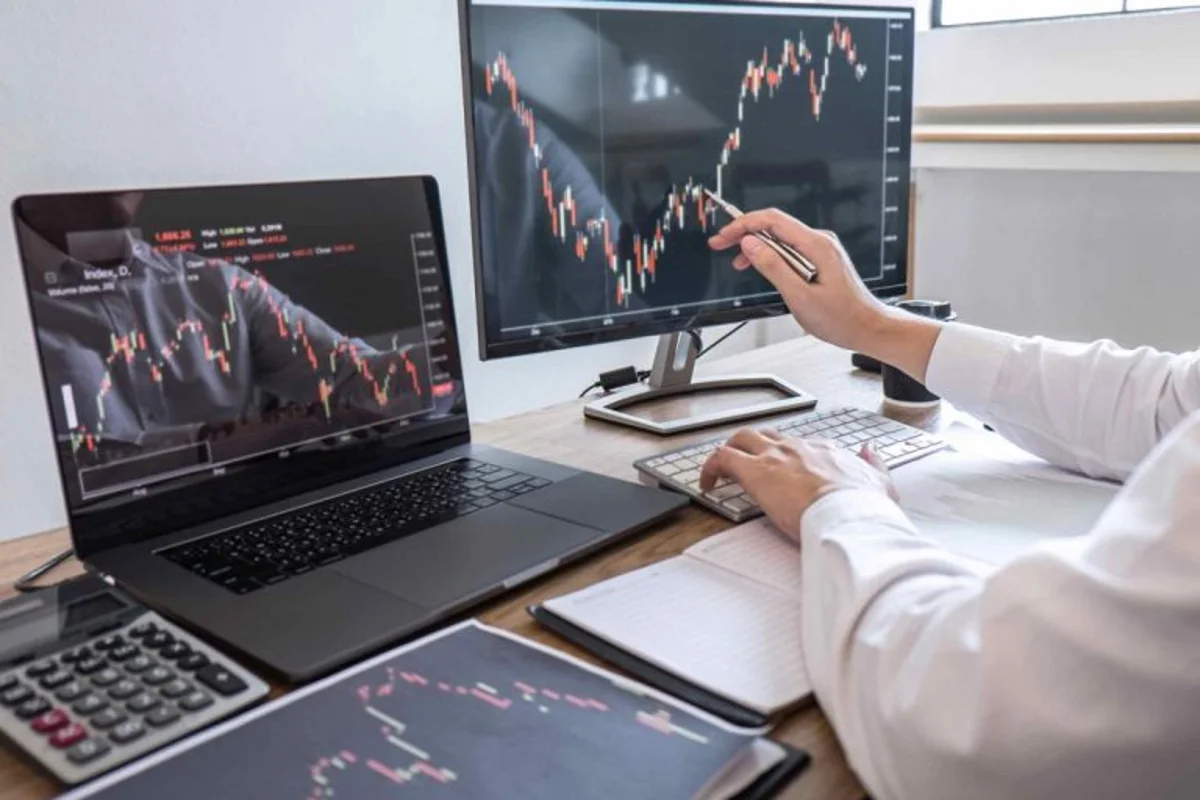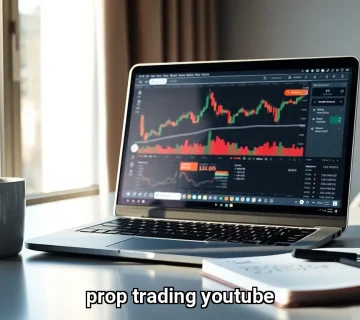how prop trading firms work? Unlike traditional investment firms that manage client assets, proprietary trading firms use their own capital to trade financial instruments, aiming for direct profits. Firms like Propx Pro provide traders with access to substantial capital, advanced technology, and strategic insights to navigate the markets efficiently. This model allows traders to implement innovative strategies without the constraints of client expectations, enabling quick decision-making in response to market fluctuations. By leveraging their own funds, prop trading firms operate with greater autonomy, taking calculated risks that can lead to significant rewards.
At the heart of these firms lies a fascinating model that emphasizes collaboration, performance, and profit-sharing. Aspiring traders often undergo rigorous assessments to showcase their skills before gaining access to the firm’s capital, enabling them to execute trades without risking their own money. This assessment process not only tests a trader’s technical abilities but also evaluates their psychological resilience and decision-making skills under pressure.
Moreover, the environment within a prop firm trading fosters continuous learning, as traders share insights and strategies, benefiting from the experience of their peers. This collaborative culture is crucial; it encourages the exchange of ideas and the development of new trading strategies, which can lead to innovative approaches to market challenges. The synergy created within these teams often results in a more agile trading strategy that can adapt to the evolving market conditions effectively.
In this article, we’ll dive deeper into the mechanics, structures, and operational processes of proprietary trading firms. Whether you’re a seasoned trader or just curious about the financial markets, there’s much to discover about how these firms function and the opportunities they offer. Keep reading to uncover the intricate world of prop trading and learn what makes it tick. Understanding the unique attributes of prop trading firms can provide valuable insights into the broader financial ecosystem, illustrating how these entities contribute to market liquidity and efficiency. Their ability to act quickly and decisively in trading positions often results in improved price discovery and can have a notable impact on market trends.

How Prop Trading Firms Work
Proprietary trading firms operate in a distinctive manner compared to traditional investment firms. At the core of their operations, these firms utilize their own capital to engage in trading activities within various financial markets. This approach allows them to generate profits directly from trading, rather than relying on commissions from client transactions. The central premise of how prop trading firms work involves a unique combination of capital allocation, profit-sharing agreements, and the operational support provided to traders. When a trader joins a prop trading firm, they typically undergo an evaluation or assessment process.
This initial challenge is designed to gauge their trading skills, risk management capabilities, and overall potential as a profitable trader. Once they successfully complete this stage, they gain access to significant capital supplied by the firm. This capital enables them to engage in various trading strategies without the immediate need for personal investment. For instance, talented traders who might lack the necessary funds to scale their operations can leverage the financial resources of the firm to amplify their trading activities. This unique setup is one of the key advantages of prop trading, as it allows individuals to focus solely on trading performance rather than the constraints of personal financial limitations.
Another essential aspect of how do prop trading firms work is the profit-sharing model established between the traders and the firm. Typically, a trader will receive a substantial percentage of the profits they generate, which can range from 50% to as high as 90%, depending on their agreement with the firm. This model incentivizes traders to maximize their performance, aligning their interests with those of the firm.
Since the firm stands to gain from the trader’s success, it also invests significantly in technology and resources to support its traders. This includes access to advanced trading platforms, market research, and real-time analytics tools, which are critical for informed decision-making. Furthermore, the allocation of resources often extends beyond just technology; many firms also prioritize the development of soft skills, emphasizing the importance of mentorship, emotional resilience, and strategic thinking in achieving long-term trading success.
Additionally, prop trading firms often provide a collaborative environment where traders can learn from each other and share strategies. By working alongside experienced professionals, novice traders have the opportunity to enhance their skills and build valuable connections within the trading community. This learning environment is particularly beneficial for those who are new to trading, as they can gain insights from seasoned traders and refine their approaches in real-time market conditions.
The firm’s commitment to continuous education and professional development is often reflected in the workshops, training sessions, and peer-review processes that are integral to the firm’s culture. Such initiatives not only foster individual growth but also create a more cohesive team dynamic, ultimately leading to improved trading outcomes for the firm as a whole.
Understanding Proprietary Trading Firms
Understanding proprietary trading firms, including Propx Pro, requires examining the operational models and structures that shape their functionality. These firms vary widely in their trading strategies, market focus, and organizational frameworks. Some, like Propx Pro, specialize in high-frequency trading, leveraging cutting-edge technology to execute numerous trades in milliseconds, while others focus on swing trading, arbitrage, or other long-term strategies. The diversity in trading approaches stems from the expertise and backgrounds of the traders, enabling firms to explore a broad spectrum of market opportunities and risk profiles, ultimately enhancing profitability and competitiveness in the financial sector.
A key characteristic of prop trading firms is their autonomy from external clients. Unlike traditional investment firms that manage client funds and earn fees based on assets under management, these firms trade with their own capital. This autonomy allows them to experiment with innovative trading strategies, take calculated risks, and react swiftly to changing market conditions without the constraints often imposed by client expectations. This independence can lead to a more aggressive approach to trading, as firms are not limited by the need to adhere to client guidelines or preferences. Instead, traders are encouraged to push boundaries and explore new avenues for profit generation.
Moreover, the revenue streams of these firms typically derive primarily from the profits generated by their traders. This is distinct from conventional brokerage firms, which earn revenue through commissions and fees charged to clients. Consequently, the success of a prop trading firm is closely tied to the performance of its traders. As a result, firms often implement strict performance metrics to evaluate their traders and may adjust capital allocation based on individual trader performance.
This creates an environment of accountability but can also introduce pressure on traders to consistently deliver results. Balancing this pressure with the need for creativity and risk-taking is a critical aspect of a trader’s role within a prop firm, highlighting the complex interplay between performance expectations and the freedom to innovate in trading strategies.

Insight into Prop Trading Operations
To gain insight into prop trading operations, it is essential to understand the various roles within a prop trading firm. At the forefront are the traders, who are responsible for executing trades and managing their allocated capital. However, behind the scenes, a range of professionals supports the trading desk. This includes risk managers who monitor trading activities to ensure compliance with the firm’s risk tolerance levels, analysts who provide market research, and technology experts who maintain the trading infrastructure. The collaborative nature of these roles is crucial; it ensures that traders have access to the information and resources they need to make informed decisions while also adhering to the firm’s risk management protocols.
The operational model can also include a mix of physical office environments and remote trading setups. Some prop firms maintain traditional trading floors, where traders can collaborate and share ideas in real-time. Others have adopted a more flexible approach, allowing traders to work remotely using sophisticated online platforms. This shift towards remote trading has become increasingly prevalent, particularly in light of advancements in technology and communication tools that facilitate seamless interactions among traders and support staff. The ability to trade from anywhere in the world has opened up new opportunities for firms to attract talent, as they are no longer restricted by geographic location in their hiring practices.
For firms that may not only focus on trading but also provide technological resources, the integration of cutting-edge software solutions plays a crucial role in optimizing trading operations. These firms invest in proprietary algorithms and analytics tools to enhance trading performance and manage operational risks effectively. The use of advanced data analytics and machine learning can significantly improve the decision-making process, allowing traders to identify patterns and trends that may not be immediately apparent. This technological edge can create a competitive advantage in the fast-moving financial markets, where timely and informed decisions are paramount.
The Mechanics of Proprietary Trading
The mechanics of proprietary trading involve a systematic approach to capital allocation, trading execution, and profit realization. When a trader receives capital from a prop trading firm, they are typically required to adhere to specific guidelines regarding risk management and trading strategies. These guidelines are critical for protecting the firm’s capital and ensuring that traders operate within defined parameters. Effective risk management practices are essential in prop trading, as the potential for substantial gains comes with an equally significant risk of losses. This balance between risk and reward is a fundamental principle that every trader must navigate as they develop their trading strategies.
The trading strategies employed by prop traders can vary widely, ranging from algorithmic trading that relies on mathematical models to fundamental analysis that focuses on economic indicators and company performance. Regardless of the strategy, the underlying goal remains consistent: to generate profits for both the trader and the firm. In the realm of proprietary trading, the emphasis is placed on performance metrics that reflect not only profitability but also risk-adjusted returns. This approach encourages traders to think critically about their strategies and to continuously refine their methodologies to enhance their outcomes.
Traders often utilize leverage provided by the firm to amplify their trading positions, which can enhance potential profits but also increase risk. This dynamic creates a delicate balance that traders must navigate to achieve sustainable success. The firm’s risk management protocols play a vital role in this equation, helping to mitigate potential losses and ensure that traders do not exceed acceptable risk thresholds. The interplay between leverage and risk management is a critical aspect of the proprietary trading model, necessitating that traders remain disciplined and well-informed about market conditions and the potential impacts on their trading positions.

A Guide to Prop Trading Firms
For those considering entering the world of proprietary trading, a guide to prop trading firms outlines several crucial steps and considerations. First, aspiring traders should research different firms to understand their specific requirements, evaluation processes, and profit-sharing structures. Each firm may have unique criteria for onboarding traders, including joining fees, assessments, or trading challenges that must be completed. This research phase is vital, as it sets the foundation for a trader’s journey in the prop trading space, enabling them to align their skills and aspirations with the right firm.
Once a trader has selected a firm, they will typically enter an assessment phase, where they demonstrate their trading abilities under a controlled environment. This may involve trading on a demo account with simulated capital or navigating real market conditions with limited risk. Upon successful completion, traders can access larger amounts of capital and begin their trading journey. The transition from assessment to active trading is a significant milestone, marking the beginning of a trader’s professional development within the firm.
Moreover, prospective traders should consider the level of support and resources offered by a firm. Access to advanced trading technology, educational resources, and mentorship opportunities can significantly enhance a trader’s potential for success. Firms may provide cutting-edge technology and a supportive environment that fosters growth and collaboration among traders. The availability of mentorship programs can be particularly advantageous, as experienced traders can offer guidance and share insights that can accelerate the learning curve for newcomers. Building a strong support network within the firm can be instrumental in navigating the complexities of the trading environment.
Exploring the Structure of Prop Trading Firms
Exploring the structure of prop trading firms reveals the intricacies of their operations and the relationships among various stakeholders. At the top level, firm management is responsible for setting the strategic direction of the firm, establishing risk tolerance policies, and overseeing capital allocation. This leadership guides the overall vision and objectives, ensuring that the firm remains competitive in the ever-evolving financial landscape. The alignment of management’s vision with the operational strategies employed by traders is crucial for fostering a cohesive approach to achieving the firm’s financial goals.
Traders form the backbone of the firm, executing trades and generating profits. Their success directly impacts the firm’s financial performance, making it essential for firms to cultivate a team of skilled traders. Many prop trading firms implement structured training programs and ongoing education to develop the capabilities of their traders continually. This investment in human capital not only boosts the individual performance of traders but also contributes to the overall success of the firm, reinforcing the idea that a well-trained team is a valuable asset in the competitive trading landscape.
In addition to traders, support staff, including risk managers, compliance officers, and technology specialists, play critical roles in maintaining the firm’s operational integrity. These professionals ensure that trading activities adhere to regulatory standards, manage risks effectively, and facilitate the smooth functioning of trading systems. The collaborative efforts of these roles create a stable environment in which traders can operate, allowing them to focus on executing their strategies without the distraction of operational concerns. This structure underscores the importance of teamwork and shared responsibility within prop trading firms, illustrating how every role contributes to the firm’s overall success.
Conclusion
Understanding how prop trading firms work involves recognizing the unique interplay between capital allocation, trader performance, and risk management. By leveraging their resources effectively, these firms create opportunities for traders to thrive while achieving their financial objectives. The intricate relationships among traders, support staff, and management play a critical role in fostering an environment conducive to success, with each stakeholder contributing to the firm’s overarching goals.
In summary, proprietary trading firms like Propx Pro operate on a unique model that differentiates them from traditional investment firms. By using their own capital, they allow traders to execute various strategies without personal financial risk. This structure fosters innovation, agility, and collaboration, enabling traders to quickly adapt to market changes. Propx Pro, in particular, provides a supportive environment with cutting-edge technology and funding opportunities, ensuring that skilled traders can maximize their potential. Through a rigorous selection process, the firm builds a high-performing team aligned with its profit-sharing model, incentivizing traders to optimize their performance and contribute to overall success.
Furthermore, the operational structure of prop trading firms highlights the essential roles of support staff and management in maintaining a competitive edge in the fast-paced financial landscape. With a focus on risk management and trader development, these firms cultivate a robust trading ecosystem that benefits all stakeholders involved. The ongoing evolution of proprietary trading practices, driven by advancements in technology and changing market dynamics, presents numerous opportunities for traders to excel and innovate.
As you explore the intricate world of proprietary trading, it’s clear that these firms not only shape the careers of talented traders but also play a significant role in the broader financial markets. Understanding their operations opens up a wealth of opportunities for those looking to make their mark in the trading arena, reinforcing the notion that with the right resources, knowledge, and support, traders can thrive in this dynamic landscape. This exploration of how prop trading firms work reveals the potential they hold for aspiring traders, emphasizing the importance of strategic thinking, ongoing education, and collaboration in achieving success in the financial markets.




No comment